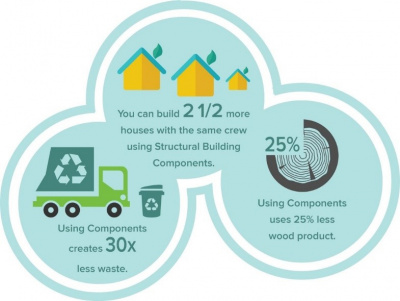Editor's Message: What Does Your Company Actually Sell?
Editor's Message: What Does Your Company Actually Sell?
On the surface, your company is selling its people and their expertise in using highly specialized software and equipment to design and manufacture a series of structural components. Additionally, you’re selling your ability to assemble those components as efficiently and cost-effectively as possible and deliver them to the jobsite exactly when the customer needs them.
However, these fundamentals are what have made this industry a successful part of the building supply chain and are not really unique to a single component manufacturer (CM). To differentiate and create real value, your company has to focus on what makes it stand out from all the other choices your customers have in the market. It may be you have exceptionally diverse product offerings or more creative framing solutions. Maybe your approach to logistics makes you more responsive, or possibly your customers simply know you better and trust you more. So again, what is your business really selling?
“FedEx and UPS deliver packages, but what they are really competing on is their systems that allow customers to track where their packages are,” says Jason Blenker, president of Blenker Building Systems. “Domino’s CEO says they may be in the pizza-making business, but what they sell is pizza delivery.” The point Jason is making is that in a mature market, the sale must be focused on the value-added benefit your company is offering, not just the product being produced.
“We sell time savings.” This is what Jason, Dean Rana, owner of Truss Fab, and Gerry McCaughey, CEO of Entrekra, have all recently told me is their focus. These three men sell the same structural components your company does, but their sales force talks almost exclusively about decreased cycle times and smaller installation crews on the jobsite. “There’s a reason why ‘off-site framing’ is the buzzword of the day," says Jason. “It addresses builders’ biggest pain points. But we’re not doing anything that hasn’t already been done before, it’s just that the need is more acute.”
Roof trusses, wall panels, and floor systems are the perfect solution to builders’ current struggles, which means not only are you probably as busy as you’ve ever been, there is a real opportunity to experience even greater market growth.
This is why SBCA conducted two Framing the American Dream (FAD) studies in 1995 and 2015. They validate the truss industry and its “off-site framing” approach and provide your entire business with comprehensive data to back up claims about reduced cycle times and jobsite labor. It’s also why SBCA launched bestwaytoframe.com. This website is intended to help your business build its brand. Its wide variety of content can be used to reinforce the unique value you bring to your customers.


